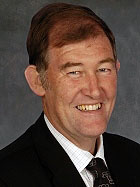Now published, see the full article 
Early Abstract:
Introduction: Geographic measures of accessibility can quantify inequitable distributions of healthcare. Although closest-distance measures are often used in Aotearoa New Zealand these may not reflect patient use of healthcare. This research examines patterns of patient enrolment in general practitioner (GP) services from a geospatial perspective.
Method: Patient enrolment records (n=137,596) from one Primary Health Organisationwere examined and geographic information systems (GIS) used to determine whether patients enrolled with their closest GP service. A binomial logistic regression was performed to examine factors associated with the bypass of GP services closer to patients’ homes.
Results: Overall 68.1% of patients in the sample bypassed the GP service closest to their home, while rates of GP bypass varied across the Waikato region and between rural and urban areas. A binary logistic regression analysis revealed that rurality of patient residence, patient ethnicity, patient age, area-level socioeconomic deprivation, sex, distance to the closest GP clinic, clinic after-hours availability, Māori Service Provider status, GP and nurse Full Time Equivalent hours, and clinic fees were statistically significant predictors of increased closest-GP bypass. While residents of major urban areas had high rates of GP bypass, this was followed by patients living in rural areas and, in fact, patients living more than 20 kilometres from the closest GP service had exceptionally high rates of GP bypass.
Conclusions: This study suggests that most patients in the Waikato region do not enrol with the GP service closest to their home and outlines several factors, including rurality of residence, that are associated with the GP bypass. Closest-distance accessibility measures may be inappropriate in mixed urban-rural settings, and researchers should consider other approaches to quantifying spatial equity. Health services should also be designed to better reflect the realities of the populations they serve.



